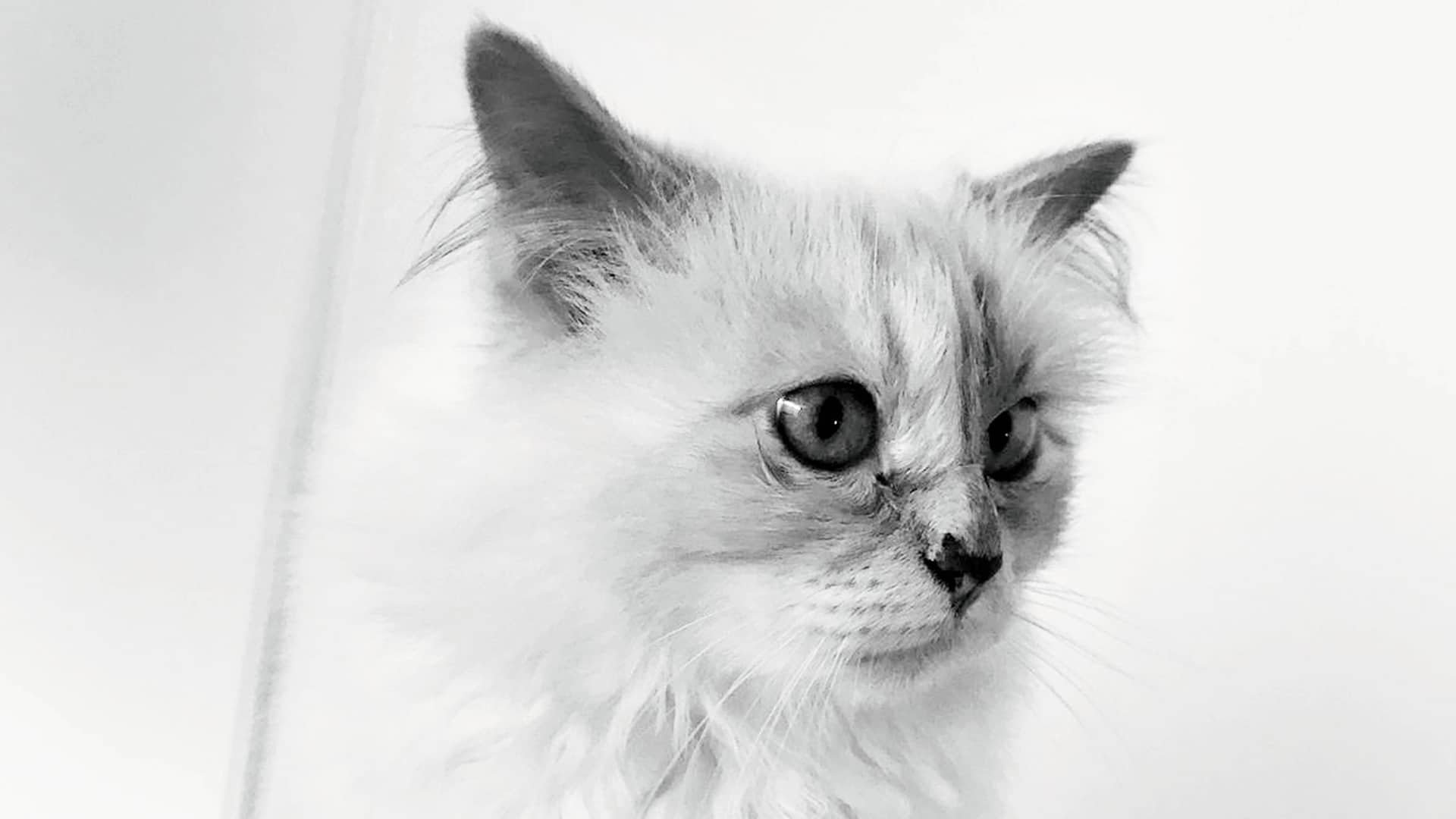
© Karl Lagerfeld, 2018
Does the publication of this book come as a surprise to you?
Not at all. Cats have become the number one pet—unless you count goldfish, of which there are more. Over the past twenty years, cats have largely surpassed dogs which, on the other hand, are declining in popularity. Cats have become the iconic animal of the moment, like dogs were in the years 1950-1980. So it is absolutely not surprising. In addition, books on cats are published on a regular basis. There are books by cat owners about their own personal experiences. It is something that is therefore very deeply rooted in the Western world.
To what extent is this book a testament to the evolution of the image of cats in our western societies?
It shows how important cats have become and how they are viewed by their owners as true individuals. This book is a kind of portrait made up of photographs, created by the owner himself—Karl Lagerfeld, in this case. This is part of the trend of cat owners who take series of photos. Some books by cat owners have actually been very successful. I wouldn’t be surprised if this book had a large print run. This whole production points to just how much cats are viewed as indivuals. This means paying attention to the unique personality of one’s pet, paying attention to his postures, and so on.

© Karl Lagerfeld, 2018
We’re seeing the arrival of the “cat-dog.”
It hasn’t always been like this. The image of cats has evolved tremendously…
Of course! This is representative of what has been going on since the 80s and 90s. There has been a change of mindset. And we’ve come a long way… In the medieval West, cats symbolized the devil, Satan, evil. Alley cats, black or tabby, have often been associated with witches and demons. Hence the fear of the black cat; it’s considered a sign of bad luck. So there has been a reversal in the way cats are perceived recently. And it’s being taken pretty far, because now we’re seeing the arrival of the “cat-dog.” These are cats that behave like dogs. They beg for human attention, want to play with them, are true companions.
Why did cats have such a negative image in the Middle Ages?
It goes back even further than that. Cats had a very positive image in ancient Egypt, where they were associated with deities. On the other hand, in ancient Rome, they had a negative image. First of all, cats kill birds, and in ancient Rome, birds were the most popular house pets. So cats had a bad reputation for that reason. Then there is the high fertility rate found in cats, which made them a symbol of sexual lasciviousness. In Rome, the word “cattus” became the synonym for prostitutes. This negative vision was later taken up by Christianity in the 12th century, when cats were associated with heresy, and with the Cathar heresy in particular. The words “cathar” and “cattus” became lumped together. The witch hunts in the 14th to 17th centuries further accentuated this very negative vision of cats, as they were animals associated with witches.

© Karl Lagerfeld, 2018
Isn’t this book, Choupette, a sign of excess that’s atypical of our era, the iconization of a household pet, an extreme case?
Obviously, you could say that it’s the eccentric version of this whole trend with cats, as Karl Lagerfeld was an eccentric character himself. Choupette is not representative of all cats. And there are actually a lot of abandoned cats. This is the consequence of the whole cat trend: there has been a drastic increase in the number of abandonned cats in our western societies. Choupette therefore symbolizes a trend in the extreme, but it is an eccentricity that is nevertheless part of a modern day trend. Sixty years ago, Karl Lagerfeld would not have done this book with a cat; he would have done it with a dog.

Interview by Jean-Baptiste Gauvin


